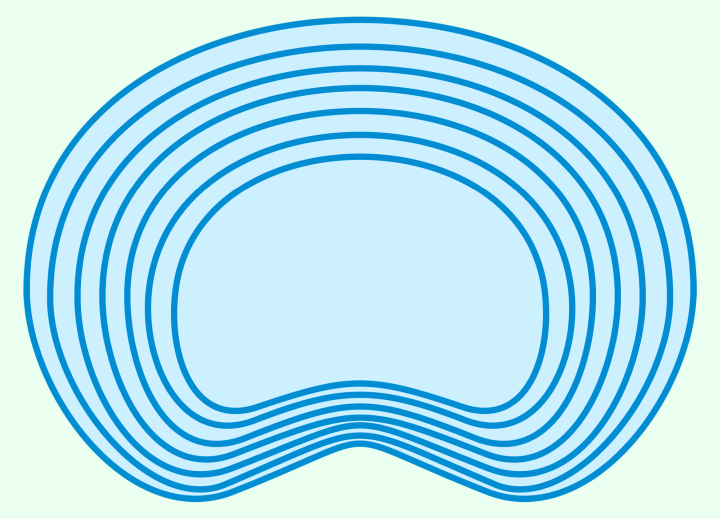To provide services at the highest level, we use cookies. Using the website requires you to choose settings related to their storage on your device. If you want to know what each type of cookie is used for, click the Details button below.
Intervertebral disc – diseases and treatment 5 kwietnia 2023 |

The intervertebral disc is an integral part of the spine, playing key roles in its structure and functioning. It's a kind of shock absorber located between each pair of vertebrae in the spine. Its main function is to absorb shocks and strains generated by body movements, while at the same time providing the spine with elasticity and mobility.
The intervertebral disc structure consists of two main parts. The outer part, called the annulus fibrosus (Latin), is made of hard layers of collagen that provide strength and stability. The inner part, called the nucleus pulposus (Latin), is more elastic and gel-like, allowing the disc to cushion pressures on the spine.
Intervertebral discs are essential for the health of the spine and overall well-being. Due to continuous strain, they may undergo damage or degeneration. An example is intervertebral disc herniation, where the inner nucleus pulposus shifts, pressing on the spinal nerves, which can lead to constant or frequent pain, numbness, or limb weakness.
While damage and degeneration of intervertebral discs are common, there are many treatment methods and preventions for these conditions. Therapies such as rehabilitation, pain medications, and in some cases surgical interventions, can help manage pain and improve quality of life. Additionally, a healthy lifestyle, including regular physical activity and proper nutrition, can contribute to the maintaining of the health of intervertebral discs.
By taking care of the intervertebral discs, we can prevent many problems related to the spine, such as back pain, discopathy or hernia. The key to the health of intervertebral discs is maintaining proper posture, as well as regular physical activity, balanced diet and rest.
Proper posture is key to health of the intervertebral discs. Both when sitting and standing, it is important to maintain a straight posture, with evenly spread shoulders and head held high. While sitting, your feet should be flat on the floor, and your back should be well supported. Prolonged sitting or standing can exert pressure on the intervertebral discs, so regular breaks and change of position are recommended. However, sitting that creates a 90° angle between the legs and torso is not recommended, as it is unfavorable for the hips.
However, it is regular physical activity that is a very important element in taking care of intervertebral discs. This includes exercises strengthening the muscles of the abdomen and back can help maintain the spine in the correct position, thereby reducing the load on the discs. Aerobic exercises, such as walking, swimming or cycling, also improve blood circulation, which in turn helps nourish the discs.
A balanced diet rich in nutrients is equally important for the health of intervertebral discs. It is necessary to consume enough water to maintain proper hydration of the discs. In addition, a diet rich in protein, vitamins C and D and other nutrients, such as magnesium, can help maintain the health of the discs.
Proper rest and sleep are also key to the health of the spine and intervertebral discs. During sleep on a good mattress, the spine is relieved, allowing the discs to regenerate. That's why it's important to ensure the right amount of sleep every night. In addition, avoiding
The intervertebral disc is a flexible structure located between the vertebrae of the spine. It consists of an outer fibrous ring and an inner gel-like nucleus. It serves as a cushion, allowing movement of the spine and providing flexibility and protection against injuries.
Intervertebral disc problems can cause various symptoms such as back pain, radiating pain to the limbs, numbness, muscle weakness, difficulty in movement, and limited range of motion. The symptoms can be associated with disc herniation, degeneration, injury, or other conditions.
Risk factors for intervertebral disc problems may include poor posture, obesity, sedentary lifestyle, lack of physical activity, heavy lifting, genetic predisposition, aging, and spinal injuries. There are also other non-specific risk factors for intervertebral disc diseases. Therefore, it is important to regularly undergo check-ups and report any symptoms to a doctor.
The treatment of intervertebral disc problems can involve various methods depending on the severity and type of the condition. These may include physiotherapy, pain medications, anti-inflammatory injections, manual therapy, chiropractic care, acupuncture, and in some cases, surgical intervention.
There are several ways to prevent intervertebral disc problems, such as maintaining proper posture, engaging in regular physical activity, avoiding prolonged sitting, lifting heavy weights properly, and maintaining a healthy diet. It is also crucial to ensure proper sleep hygiene, including using a suitable mattress and pillow.